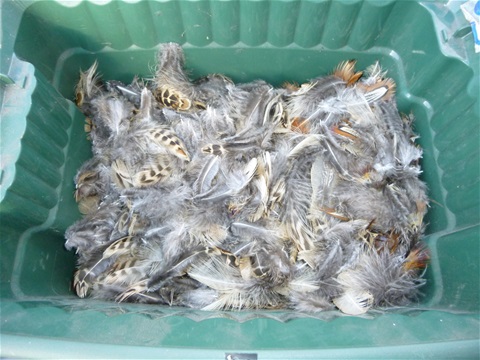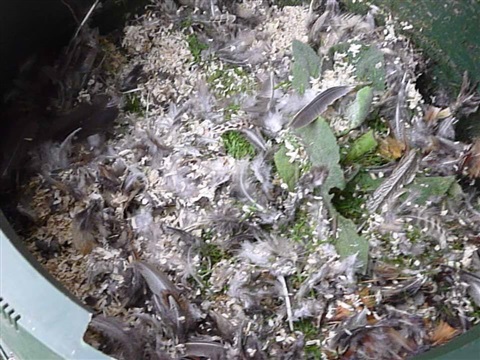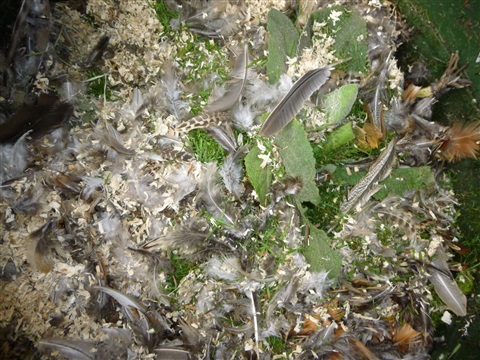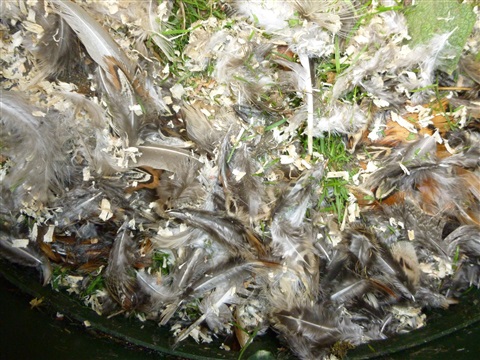Composting feathers
Feathers from poultry and game birds consist of about 90% protein by weight and contain approximately 15% Nitrogen. They can be home composted and are classified as a “Green”. The protein is in the form of keratin which is fibrous, insoluble and resistant to biodegradation, meaning that the nitrogen will not be available as a nitrogen source to plants without the keratinolytic activity of microorganisms. This is not a problem for the home composter as these microbes are widely distributed in the environment including the soil and some of them will be found in the composting material already in the bin. Bacillus subtilis, (known as the hay or grass bacillus), is commonly found in soil as well as the gastrointestinal tract of ruminants. In addition, some of the required bacteria are normally present on the feathers of wild birds which are likely to be attracted to the run of backyard hens. e.g. Bacillus licheneformis and Streptomyces sp. In addition, the temperatures reached in a typical home hot composter encourages the growth and activity of other keratin-decomposing microorganisms, e.g. Thermoactinomyces vulgaris. Other organisms found in poultry waste showing high keratinolytic activity include Chryseobacterium sp. Consequently, the feathers will be quite easy to home compost.
There is an obvious appeal in composting feathers for those who keep home or backyard poultry as there will be regular supply as they moult. Those who shoot or beat for game birds will also have a regular need to dispose of feathers during the shooting season. In addition, there may be a less regular source of feathers from old down or feather pillows and cushions.
In a domestic compost bin bird feathers will break down within just a few months if mixed with a good carbon source. The sawdust or wood shavings from the hen house, manured by the bird droppings, is ideal but other browns such as sawdust, wood chip and wood shavings will also act as a bulking agent to maintain the air flow into and the within the bin/pile while helping to maintain the temperature excessive heat loss. On a wind free day I mix dry feathers with the wood shavings. I soak the mixture after it has been added to the bin. If feathers are to be added directly to the bin without premixing it is advisable to soak them overnight in a bucket of water before adding to the bin. This will assist the start the decomposing and prevent them being blown over the garden by the wind while attempting to add them to the bin.
Feathers can also be trench composted or added in the form of a thin layer in the bottom of the hole when planting soft fruit.




Pranav Bhagwat
Hello,
Looking forward to actively take part in making my own compost. I'm particularly interested in making it from cat litter and feathers.
richard robinson
...but it's amazingly precise and utterly credible. I could be on first name terms with things I always used to lump together as 'germs'. All my life I have been microbist.
richard robinson
The sentence structure breaks down towards the bottom of the page. Needs aerating with some mixed phrases perhaps, or perhaps a sprinkling of nouns.